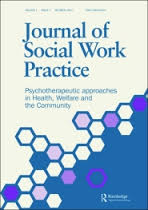The distinction between being and feeling frail: Exploring emotional experiences in health and social care
The concept of frailty provides access to key health and social care services. While health care professionals charged with implementing standard assessments generally agree on what constitutes frailty, lay understandings make a crucial distinction between ‘being’ and ‘feeling’ frail. The distinction between the imposition of a medical/functional classification (being frail)and the emotions related to impairment, traumatic events, and maintaining a continuous identity (feeling frail) reveal how that which is commonly considered ‘frailty’ plays out within the everyday experiences lived in, and in relation to, the body and self. Older women’s interpretations illustrate some of the conflicts and emotions within experiences of impairment, disability and decline — showing how these are much more personal than we are led to believe by policies and practices focused on objective criteria and standard measurement. Further, they suggest that older women’s identities and strategies are at least partly negotiated in relation to the experience of ‘feeling’ frail, that the identity and self may serve as a protective mechanism from ‘becoming’ frail, and the existence of a threshold between these two conditions. Understanding and addressing the emotional aspects of what professionals know as ‘frailty’ may improve the likelihood of appropriate professional responses to older persons.

